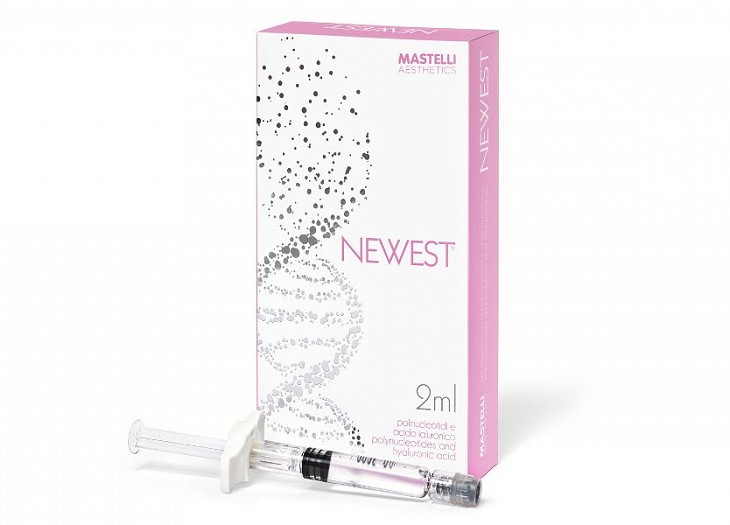
Polynucleotides are perhaps the hottest topic of the aesthetic industry at the moment and it’s essential to grasp the essence of these 'restorative injectables'. So, what are polynucleotides, exactly, and how can they help to resolve your skin concerns?
Polynucleotides are known as the ‘future of regenerative injectables’, and acknowledged for their ability to rejuvenate and regenerate the skin, similar to skin boosters like Redensity 1.
However, opposed skin boosters, polynucleotides are renowned for their wound-healing and bio-stimulating properties.
Although similar to skin boosters, polynucleotide injectables are a distinctly different treatment and well-recognised for their complex structures and ability to rejuvenate the skin with a natural result.
Taking a scientific approach to ‘what are polynucleotides’, these injectables employ filtered, ultra-purified and sterilised DNA fractions with the aim of rejuvenating the skin.
Predominantly derived from salmon DNA, polynucleotides are designed to stimulate fibroblasts, promoting tissue repair, enhance cell turnover, increase elasticity and encourage collagen production.
Additionally, they possess the ability to soothe inflammation and restore the balance of melanocyte activity (skin pigmentation), resulting in a more even and refreshed skin tone without adding volume like traditional dermal fillers.
Also frequently known as PN or PDRN, polynucleotides are categorised as a regenerative treatment with the purpose of revitalising the dermis on a deeper level. Each polynucleotide strand consists of a repeating pattern of a sugar molecule and a phosphate group. DNA and RNA represent the two main categories of nucleic acids.
In simpler terms, these injectables essentially provide DNA molecules that encourage the skin to repair itself and promote various skin-boosting benefits, both immediate and long-term. This exciting advancement in regenerative medicine focuses on restoring normal cellular function by repairing the skin on a more intense level.
Like many other regenerative medicine tools, polynucleotides have a long history of being used in general medicine before their introduction to the world of medical aesthetics and there are over 90 clinical trials to back this up.
What Can Polynucleotides Be Used For?
Aside from an increase in search queries for ‘what are polynucleotides’, another question we often see is ‘what can polynucleotides be used for?’.
Unlike some injectables, polynucleotides are an exceptionally versatile and all-around treatment. With polynucleotide products developed with a host of concerns in mind, these restorative injectables can be used to treat perceived flaws across the body and face, including the eye area and stretch marks.
Excellent at boosting fibroblast production and inducing deep tissue repair processes, polynucleotides enhance the skin’s quality whilst also aiding with other concerns. Some other key usages of polynucleotides include:
- Acne-, lumpy- and atrophic scarring
- Rosacea, melasma and hyperpigmentation
- Facial ageing such as sagging and the formation of lines
- Alopecia and Androgenic hair loss
- Skin rehydration and rejuvenation
- Actinic elastosis or ‘solar elastosis’
How Long Does It Take for Polynucleotide Injections to Work?
Like other injectables, polynucleotides also require a period of downtime and maintenance treatments for optimal efficacy. Whilst this completely depends on your aims and the product you choose to use; we recommend that undergoing a course of at least 3 treatments for maximum results.
Again, whilst it may differ from patient to patient, most people notice a difference after 3 - 5 weeks, with target results expected from 3+ months after the course of treatment has been issued.
By undergoing a series of treatments, you ensure continued active stimulation of fibroblast production, which will essentially maximise both the short and long-term results.
Moreover, for each treatment, it will depend on the degree of ageing that your tissue has and its ability to create quality tissue when stimulated by the polynucleotides. It’s also crucial to remember the importance of a healthy diet, reducing alcohol consumption and not smoking, and to also follow a nutritious regime to help repair the skin holistically.
What Is the Difference Between Polynucleotides and Dermal Fillers?
Despite there being different types of dermal filler, the most well-known and perhaps the most popular types are hyaluronic acid (HA) fillers.
The biggest difference between hyaluronic acid and polynucleotides is that dermal fillers work by restoring and adding volume to the skin. The results are almost instantaneous, with visible contouring and augmentation often lasting up to 18 months, depending on the type of dermal filler used.
On the other hand, polynucleotides work to stimulate fibroblasts at a cellular level and improve skin health. Opposed to HA dermal fillers, polynucleotides can add slight volume to the injected area, however their main goal is rejuvenation.
In a controlled study comparing the effects of polynucleotides and hyaluronic acid fillers for periocular rejuvenation, results showed that the improvement rates of skin elasticity and hydration decreased over time in both groups.
However, the polynucleotides group showed a higher improvement rate in comparison to the hyaluronic dermal filler.
Find out more about polynucleotide treatments available at our Sheffield-based clinic and book a consultation here.




